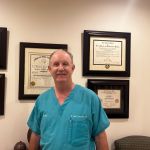Teen rhinoplasty surgeons can help teenagers enjoy rejuvenated appearance
Charlotte’s top teen rhinoplasty surgeons can help teenagers enjoy impressive results. Revision rhinoplasty, commonly referred to as secondary rhinoplasty, is a surgical procedure performed to correct or revise the shape and function of the nose after a previous rhinoplasty. While rhinoplasty itself is a common cosmetic procedure sought by individuals of various ages, revision rhinoplasty presents unique considerations, especially when performed on teenagers.
Teenagers often seek rhinoplasty to address aesthetic concerns or functional issues with their noses. However, the decision to undergo revision rhinoplasty in this age group requires careful consideration by both the patient and the surgeon. Here, we explore the potential effects of continuous revision rhinoplasty on teens.
Potential Effects of Continuous Revision Rhinoplasty on Teens
- Physical Impact:
Revision rhinoplasty involves additional surgical procedures on the nose, which can have physical ramifications, particularly for teenagers whose facial structures are still developing. Continuous revision surgeries may lead to increased tissue trauma, scarring, and alterations in nasal anatomy. These factors can potentially compromise nasal function and aesthetic outcomes.
- Psychological Impact:
Teenage years are formative, and self-image plays a crucial role in social and psychological development. Continuous revision rhinoplasty can significantly impact a teenager’s self-esteem and body image. Adolescents may experience heightened anxiety, depression, or body dysmorphic disorder (BDD) as a result of dissatisfaction with their nasal appearance despite multiple surgeries.
- Risk of Overcorrection or undercorrection:
Each revision rhinoplasty carries the risk of overcorrection or under-correction of the initial cosmetic or functional concerns. In adolescents, whose facial features are still evolving, achieving satisfactory results becomes more challenging with each subsequent surgery. Over time, the nose may lose its natural appearance, leading to dissatisfaction and the need for further revisions.
- Long-term Nasal Function:
Continuous revision rhinoplasty can impact long-term nasal function. The nasal structure may become increasingly fragile and prone to complications such as breathing difficulties, nasal congestion, or nasal collapse. These issues can persist into adulthood, affecting the individual’s quality of life and necessitating additional medical interventions.
- Financial Considerations:
The cost of revision rhinoplasty can be substantial, especially when multiple surgeries are required. For teenagers and their families, the financial burden of continuous revisions must be carefully weighed against the potential benefits. Additionally, insurance coverage for revision rhinoplasty may vary, further complicating the decision-making process.
- Ethical Concerns:
Performing multiple revision rhinoplasty procedures on teenagers raises ethical considerations for plastic surgeons. It is essential to prioritize the well-being of the patient and consider the potential risks and benefits of each surgical intervention carefully. Surgeons must engage in thorough pre-operative evaluations and discussions with teenage patients and their guardians to ensure informed decision-making.
- Impact on Facial Growth:
Teenagers undergoing continuous revision rhinoplasty may experience interference with normal facial growth and development. The nose is intricately connected to surrounding facial structures, and repeated surgeries can disrupt this harmony. Changes in nasal anatomy may affect the proportions of the face, potentially leading to asymmetry or imbalance. Surgeons must consider the impact of revision rhinoplasty on overall facial aesthetics and growth potential in adolescent patients.
- Social and Peer Influences:
Adolescence is a time of heightened social awareness, and peer influences can play a significant role in shaping self-perception. Teenagers may seek revision rhinoplasty in response to perceived societal standards of beauty or peer pressure. Continuous revisions driven by external influences rather than genuine personal desire can exacerbate psychological distress and dissatisfaction. Plastic surgeons must engage in thorough discussions with teenage patients to understand their motivations and expectations for surgery fully.
- Education and Counseling:
Prior to undergoing revision rhinoplasty, teenagers and their families should receive comprehensive education and counseling about the surgical process, potential outcomes, and alternative treatment options. This educational approach empowers patients to make informed decisions about their care and helps manage expectations regarding surgical results. Counseling sessions may also address body image concerns, self-esteem issues, and psychological well-being, providing valuable support throughout the treatment journey.
- Alternative Approaches:
In some cases, non-surgical or minimally invasive interventions may be viable alternatives to revision rhinoplasty for teenagers. These approaches include injectable fillers, nasal splints, or nasal strips, which can address minor aesthetic concerns or functional issues without the need for surgical intervention. By exploring non-surgical options, teenagers can avoid the potential risks and complications associated with continuous revision rhinoplasty while achieving satisfactory results.
- Long-term Follow-up and Monitoring:
After undergoing revision rhinoplasty, teenagers require long-term follow-up and monitoring to assess surgical outcomes, nasal function, and psychological well-being. Regular post-operative evaluations allow plastic surgeons to identify any complications or concerns promptly and intervene as needed. Additionally, ongoing psychological support and counseling may be beneficial for teenagers navigating the emotional impact of revision rhinoplasty and adjusting to their new nasal appearance.
- Shared Decision-making:
Shared decision-making between plastic surgeons, teenage patients, and their families is essential throughout the revision rhinoplasty process. By fostering open communication and collaboration, surgeons can ensure that treatment decisions align with the teenager’s values, preferences, and goals. This patient-centered approach promotes autonomy, trust, and mutual respect, enhancing the overall surgical experience and outcomes for adolescent patients.
In summary, the effects of continuous revision rhinoplasty on teenagers extend beyond physical changes to encompass psychological, social, and ethical considerations. Plastic surgeons must approach these cases with sensitivity, expertise, and a commitment to holistic patient care. By addressing the potential risks, benefits, and alternatives to revision rhinoplasty, healthcare providers can empower teenagers to make informed decisions about their nasal aesthetics and function while safeguarding their overall well-being.
Visit Charlotte’s top teen rhinoplasty surgeons
Contact Dr. Sean Freeman at Only Faces, Charlotte’s most experienced rhinoplasty surgeon and top facial plastic surgeon, to schedule a consultation to find out what procedure is right for you. Call today.


